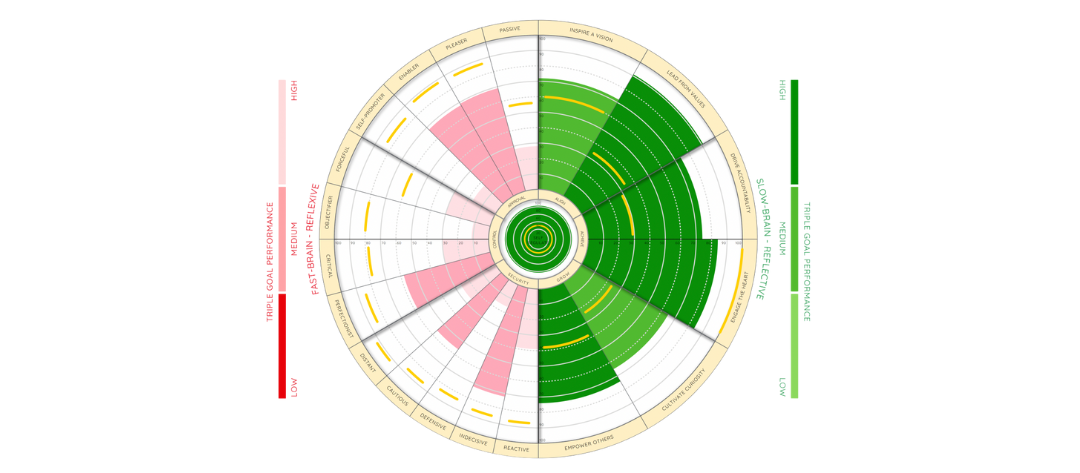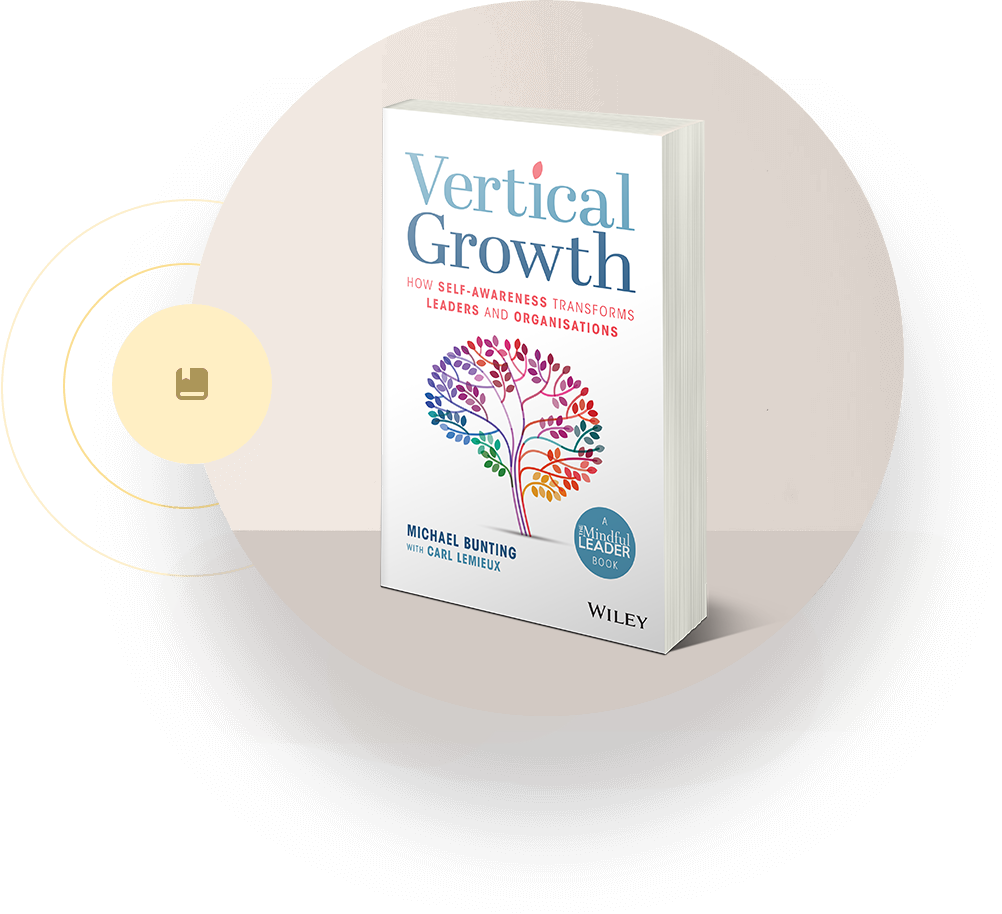Every leader eventually reaches a moment when their old ways of operating stop working. The habits, mindsets, and behaviours that once delivered success no longer meet the demands of a shifting market or a more complex challenge. This is the leadership crossroads.
At that point, leaders face a choice. They can lean into discomfort and expand into more values-driven behaviours that reflect a higher stage of growth. Or they can retreat into defensiveness, protecting their ego by holding on to patterns that once worked but now erode trust and performance.
Defensiveness is the number one career killer because it blocks vertical growth: the deeper development that transforms how leaders see, think, and act. Without vertical growth, old habits harden into limits. Defensiveness gradually undermines credibility, weakens teams, and creates an invisible ceiling on career trajectory.
The leaders who thrive long term are those who embrace the growth path. They face uncomfortable truths with honesty, take ownership for their shadow behaviours, and move into more advanced ways of leading. At each crossroads, they don’t just survive the challenge; they use it as a launchpad for growth.
Why Defensiveness Derails Leaders
Defensiveness is the ego’s instinctive response to threat. It shows up in denial, blame, justification, or avoidance; the quick moves we make to protect our image when we feel exposed. In leadership, those reflexes create ripple effects that quietly stall effectiveness.
One of the most damaging consequences is image management. Instead of focusing energy on building trust and delivering results, leaders caught in defensiveness spend large amounts of time trying to look good or justify their position.
Research across thousands of leaders shows that image management consumes up to 40% of energy in many organisations; energy that could otherwise fuel innovation, accountability, or team connection.
The Triple Goal’s Leadership Growth Profile adds another layer of evidence. Evaluations across global organisations show that defensive, red zone behaviours are strongly linked with reduced performance, weaker engagement, and lower psychological safety. The same research highlights that when leaders default to these patterns, their teams consistently report poorer mental health and diminished effectiveness.
What makes defensiveness especially corrosive is the illusion of safety it provides. In the moment, deflecting blame or shutting down feedback might feel like self-preservation. Over time, it does the opposite. Defensiveness trains teams to hold back ideas, stop raising concerns, and avoid risk. Innovation shrinks. Trust erodes. Leaders lose the chance to see what is really happening in their organisation.
Defensiveness doesn’t just block growth; it redirects an organisation’s energy toward protecting egos instead of advancing results. It’s a trap that quietly pulls leaders away from the values and behaviours that enable sustainable performance.
The Leadership Crossroads: Growth or Plateau?
Crossroads often appear at moments of transition. A leader might inherit a larger team, step into a new market, or face a disruption that exposes weaknesses in their current style.
These moments bring pressure, but they also present an invitation: adapt to meet the higher level of complexity or remain fixed in patterns that no longer serve.
At this moment, two distinct paths open up:
- Vertical Growth
Leaders who choose growth step into the discomfort of rethinking their patterns. They develop new mindsets, expand their awareness, and align their behaviour with deeply held values.
Vertical growth is less about adding skills and more about upgrading the way leaders see and respond to complexity. It requires practices such as self-regulation, curiosity, and courageous accountability, which allow leaders to inspire trust and lead at a more advanced level.
In adult development terms, this shift moves a leader from the socialized mind, shaped by external approval and belonging, into the self-authoring mind. In the latter, decisions are guided by internal values and purpose.
- Retreat into Defensiveness
Other leaders choose the comfort of old habits. They double down on ego-driven behaviours, protecting their image and resisting change.
While this path may feel safer in the short term, it leads to stagnation. Teams disengage, trust disintegrates, and the leader’s influence begins to shrink. Instead of advancing into greater maturity, they stay locked in the socialized mind, driven by the need for approval and external validation.
The leadership crossroads is not a one-time event. It recurs at every new stage of responsibility. Each time, leaders face the same choice: grow vertically or plateau.
Vertical Growth: The Antidote to Defensiveness
Most leadership development programs focus on new skills, tools, or knowledge. This type of progress, often called horizontal development, is important but limited. It helps leaders become more effective within their current way of seeing the world, but it doesn’t fundamentally change how they interpret challenges or relate to others.
Vertical growth is different. It’s the deeper shift that rewires a leader’s “operating system.” Instead of simply adding more information, vertical growth transforms the way leaders see, think, and behave. It equips them to respond to greater complexity with maturity, resilience, and presence. This inner upgrade is what allows leaders to break free from defensive reflexes and move into higher levels of effectiveness.
In the Leadership Growth Profile, we describe this shift through the lens of two patterns of behaviour:
The Green Zone
The Green Zone evaluates behaviours that drive high performance, learning agility and workplace joy (collectively known as the Triple Goal). These behaviours are organised into three core areas and six leadership practices:
- Align
- Inspire a Vision
- Lead from Values
- Achieve
- Drive Accountability
- Engage the Heart
- Grow
- Cultivate Curiosity
- Empower Others
The Red Zone
The Red Zone identifies behaviours that limit leadership effectiveness, often rooted in past stress and operating unconsciously. The three core red zone areas closely resemble the biological stress responses of freeze/fawn, fight, and flight:
- Approval: Becoming passive, people pleasing, enabling others’ bad behaviour, or needing to be the smartest person in the room.
- Control: Being forceful and dominant, treating people like objects, becoming unreasonably perfectionistic and critical.
- Security: Becoming distant instead of open, cautious instead of innovative, defensive instead of curious, indecisive instead of bold, and reactive instead of calm
All leaders move between these zones. The difference is that Green Zone behaviours are intentional, while Red Zone behaviours are reflexive.
The bridge between the two is self-regulation.
Leaders who notice their defensive impulses and pause before reacting can choose a values-aligned response instead. Neuroscience research supports this: our fast brain drives protective reflexes, while our slower reflective system allows deliberate, mindful choices. Vertical growth strengthens the capacity to use that slower system more often.
| Self-Regulation in Practice A senior leader receives feedback that her team feels she shuts down ideas in meetings. Her first impulse is to explain herself and point to the pressure she is under. Instead, she pauses, acknowledges the feedback without defending, and asks, “Can you tell me more about when this happens?” This moment of self-regulation shifts the conversation. The team opens up, trust deepens, and the leader begins practicing curiosity as a daily discipline. |
Practices such as mindfulness, reflection, and feedback help leaders build this muscle. Over time, they gain the awareness to spot Red Zone tendencies in real time – the urge to deflect blame, dominate a meeting, or shut down feedback – and redirect toward Green Zone practices that expand trust and performance.
In this sense, vertical growth is the antidote to defensiveness. It interrupts the automatic reactions of the ego and replaces them with choices rooted in purpose and values.
Leaders who commit to this path not only transform their own behaviour but also unlock higher levels of engagement, innovation, and wellbeing across their teams.
The Cost of Staying Defensive
Defensiveness carries a heavy cost, both for leaders and the organisations they serve. When protective reflexes take over, the impact spreads quickly through teams and culture.
Declining trust and engagement
Teams pay close attention to how their leader responds under pressure. When defensiveness shows up (blaming others, shutting down feedback, or avoiding accountability), people learn it isn’t safe to speak honestly.
Over time, they soften or stop offering their input or disengage altogether. Trust, once broken, is difficult to restore.
Reduced innovation
Innovation depends on risk-taking and experimentation. A defensive leader makes mistakes dangerous to admit and new ideas costly to share. Psychological safety erodes, and the team shifts into self-protection rather than creativity.
Research from the Leadership Growth Profile confirms this pattern: red zone behaviours such as defensiveness and control are strongly linked with lower engagement, weaker psychological safety, and diminished performance.
Talent drain
People don’t stay with leaders who consistently defend rather than grow. High performers in particular look for environments where they can contribute openly and develop their skills. When those conditions vanish, they leave.
The result is not only the loss of capable individuals but also a signal to the rest of the organisation that defensive behaviour at the top is tolerated.
Defensiveness narrows perspective, stalls progress, and drives talent away. The longer it goes unchecked, the more it erodes the culture leaders are responsible for building.
How Brave Leaders Grow Beyond Defensiveness
Moving beyond defensiveness requires courage. It asks leaders to turn inward, confront the patterns they would rather deny, and commit to a path of conscious practice. Brave leaders create growth by taking a series of practical steps.
See the Shadow
Growth begins by owning unconscious defensive behaviours instead of numbing, denying, or blaming. When leaders acknowledge their “shadow” tendencies, they gain the chance to choose differently rather than letting stress-driven habits run the show.
Choose Growth Values
Values are the compass that counters defensiveness. Leaders identify the virtues they most need to cultivate — qualities such as honesty, patience, or courage. Growth values expose the gap between intention and action, and they anchor leaders in the qualities that expand maturity and wisdom.
Commit to One Big Practice
Sustained change rarely comes from tackling everything at once. The One Big Practice (OBP) method focuses on a single behavioural shift that matters most. By practicing one change deliberately and visibly, leaders create progress their teams can see and trust.
Seek Feedback Without Defending
Feedback only fuels growth when it’s received without justification. Tools like the Leadership Growth Profile help surface blind spots by showing the mix of Green Zone and Red Zone behaviours others experience. With that insight, leaders can track real improvement over time.
Foster Psychological Safety
Finally, leaders model openness by rewarding vulnerability and inviting challenge. When teams see their leader acknowledge mistakes, ask for input, and listen with curiosity, psychological safety grows. This creates a culture where risk-taking, learning, and accountability thrive.
The payoff is significant. Leaders who step into this work don’t just manage their own growth — they elevate the environment around them. Teams under their leadership experience stronger trust, greater innovation, and higher engagement.
When You Grow, Everything Grows
Vertical growth is never just about the individual leader. When leaders rise above defensiveness, they create a ripple effect that transforms the people and systems around them. Energy once lost to politics, fear, and self-protection becomes available for creativity, collaboration, and progress.
Teams led by growth-minded leaders consistently report stronger engagement, greater innovation, and higher trust. People feel safe to share ideas, challenge assumptions, and take smart risks. The result is the essence of The Triple Goal: faster learning, higher performance, and a workplace where people genuinely want to contribute.
This is the ultimate promise of leadership development: when you grow, everything grows. The team, the culture, and the organisation all benefit from a leader who chooses courage over defensiveness.
Every leader will face moments of challenge where old habits stop working. At those crossroads, the choice is clear. You either grow, or you plateau. The bravest leaders choose growth.
Learn how the Leadership Growth Profile can accelerate that journey at triplegoal.com/leadership-growth-profile








